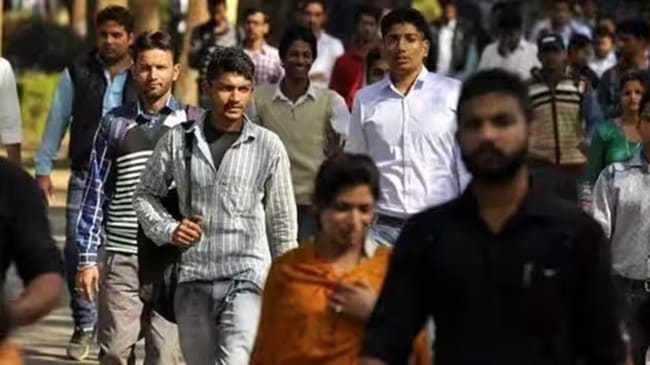Opinion India is staring at one of its biggest crises: Unemployment of the educated
In 2024, over 46,000 graduates and postgraduates applied for jobs to be contractual sanitation workers in Haryana.
 In 2017, over 12,000 people interviewed for 18 jobs as peons in Rajasthan.
In 2017, over 12,000 people interviewed for 18 jobs as peons in Rajasthan. Special Intensive Revision. Corruption. Caste equations. Out-migration. Education. Yes, Bihar is weeks away from speaking its mind. Like any election — experts, observers and shoot-in-the-dark psephologists are deconstructing “strategy” and “stance”. Over the next few weeks, your neighbour, your niece in her second year of undergraduate studies, and your uncle will turn into electoral pundits. Lots of chatter. Lost in all of this is an important conversation about a 12-letter word that does not get the importance it deserves election after election. Unemployment.
Gautam Sharma (name changed) had a chat with me recently. This soft-spoken young man in his twenties drives for a ride-hailing company. Here’s what he told me: “I never thought I would be doing this. I wanted to be a web analyst. I even got a BTech degree. But I couldn’t crack college placements. Eventually, my friend’s dad helped me land a job at a reasonably well-known firm. My salary just about covered my rent and some very basic monthly expenses. No chance of savings. But now I make about Rs 40,000 a month driving a car — considerably more than what I was earning.”
India is staring at one of its biggest crises: Unemployment of the educated. In 2017, over 12,000 people interviewed for 18 jobs as peons in Rajasthan. The candidates included engineers, lawyers, and chartered accountants. In 2024, over 46,000 graduates and postgraduates applied for jobs to be contractual sanitation workers in Haryana.
Consider this. A student spends four years at one of India’s top government colleges, paying nearly 10 lakh rupees for a degree, only to graduate with no job in hand. In 2024, two out of every five students who graduated from the Indian Institutes of Technology (IIT) did not get placement. This pattern isn’t limited to IITs. The trend is playing out across the National Institutes of Technology (NIT), Indian Institutes of Information Technology (IIIT), and other top institutions. According to the government’s own data, more than one in 10 graduates and postgraduates were unemployed last year. For women, it’s worse. One out of five women graduates and postgraduates did not have a job.
Seventy to 80 lakh youth enter the workforce every year. Where are the white-collar, reasonably paying jobs for graduates and postgraduates? Even though corporate profits are at a 15-year high, companies have been actively cutting jobs. Data from three major information technology (IT) firms in the country indicates that they have together cut about 64,000 jobs in FY24. The pace of growth in net white-collar employment of the four biggest companies has nearly halved in 2023, from what it was five years ago.
A hiring platform recently reported that four out of five engineering graduates and nearly half of business school graduates do not even have an internship offer. The PM Internship Scheme aimed to offer one crore internships in India’s top 500 firms. Reality? Less than 5 per cent of those who applied ended up with an internship.
The Union government estimates the unemployment rate at around 4-6 per cent. More worrying is the fact that educated youth account for two-thirds of the total unemployed. Recently, Reuters surveyed 50 top independent economists in the world, 70 per cent of whom said the government’s unemployment rate was inaccurate, and distorted the true scale. The discrepancy lies in the fact that data collected by the Periodic Labour Force Survey (PLFS) counts working even one hour per week as being employed.
Wide educated unemployment is also probably the reason for stagnant wages as well. In an interview, the chief human resources officer of a renowned consultancy service had admitted that salaries for fresh graduates have been around Rs 3-4 lakh per annum for years. According to the National Institutional Ranking Framework (NIRF), the average annual salary of an engineer in 2020 was Rs 33,000 per month. The Economic Survey 2025 revealed that the real wage of salaried men was Rs 395 per day and for women it was Rs 295 per day.
Further, a government-commissioned Federation of Indian Chambers of Commerce and Industry (FICCI) report revealed sluggish wage growth across key sectors between 2019 and 2023. Information Technology: 4 per cent Compound Annual Growth Rate (CAGR). Banking, financial services and insurance: 2.8 per cent CAGR. Engineering and manufacturing: 0.8 per cent CAGR.
Even among highly skilled workers like managers and professionals, the average nominal salary increase was just 5 per cent between 2020 and 2023. In the same period, inflation jumped 18 per cent.
The situation is grim. As per the National Crime Records Bureau’s (NCRB) Accidental Deaths and Suicides in India report, released recently, over 12,000 private sector employees and over 14,000 unemployed persons died by suicide in 2023. That is, 34 private sector employees and 39 unemployed persons died by suicide each day in India.
PS: Go watch Homebound. Outstanding film, directed by Neeraj Ghaywan. A true story of two boys from a village in north India in search of a job and dignity.
The writer is MP and leader, All India Trinamool Congress Parliamentary Party. Additional research: Dheemunt Jain, Prabhakar Kumar, Ayashman Dey




